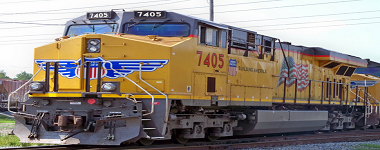Week 11 of 2016 shows same week total rail traffic (from same week one year ago) declined according to the Association of American Railroads (AAR) traffic data. All rolling averages are negative and in decline.

The deceleration in the rail rolling averages began one year ago, and now rail movements are being compared against weaker 2015 data. There were port labor issues one year ago which affected intermodal movements – which skew the results both positively and negatively (this week again negatively).
This analysis is looking for clues in the rail data to show the direction of economic activity – and is not necessarily looking for clues of profitability of the railroads. The weekly data is fairly noisy, and the best way to view it is to look at the rolling averages (carloads and intermodal combined).
A summary of the data from the AAR:
The Association of American Railroads (AAR) today reported U.S. rail traffic for the week ending Mar. 19, 2016.
For this week, total U.S. weekly rail traffic was 483,463 carloads and intermodal units, down 14 percent compared with the same week last year.
Total carloads for the week ending Mar. 19 were 235,390 carloads, down 17.2 percent compared with the same week in 2015, while U.S. weekly intermodal volume was 248,073 containers and trailers, down 10.7 percent compared to 2015.
Three of the 10 carload commodity groups posted an increase compared with the same week in 2015. They were miscellaneous carloads, up 20.4 percent to 9,837 carloads; chemicals, up 4.9 percent to 31,343 carloads; and motor vehicles and parts, up 2.7 percent to 19,273 carloads. Commodity groups that posted decreases compared with the same week in 2015 included coal, down 38.7 percent to 64,754 carloads; petroleum and petroleum products, down 26.8 percent to 10,644 carloads; and grain, down 10.6 percent to 21,494 carloads.
For the first 11 weeks of 2016, U.S. railroads reported cumulative volume of 2,672,765 carloads, down 13.3 percent from the same point last year; and 2,847,908 intermodal units, up 3.9 percent from last year. Total combined U.S. traffic for the first 11 weeks of 2016 was 5,520,673 carloads and intermodal units, a decrease of 5.2 percent compared to last year.









Leave A Comment